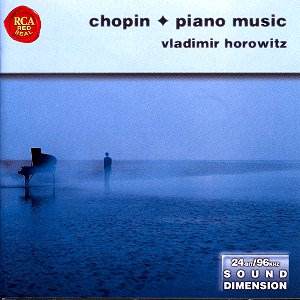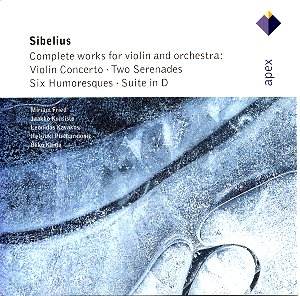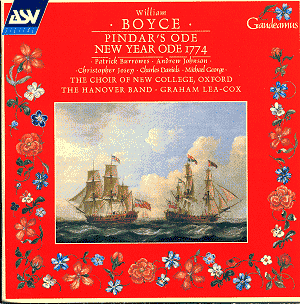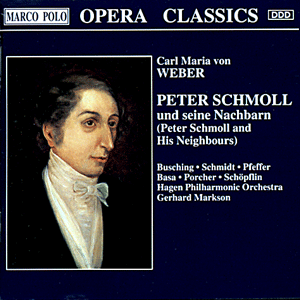 Composer: Frédéric Chopin
Composer: Frédéric Chopin
Works: Polonaise-fantaisie in A flat, op. 61; Ballade no. 1 in G minor, op. 23; Nocturnes in E flat, op. 9/2 and C sharp minor, op. 27/1; Barcarolle, op. 60; Etudes in C sharp minor, op. 25/7 and G flat, op. 10/5; Nocturnes in B, op. 9/3 and F, op. 15/1; Ballade no. 4 in F minor, op. 52; Valse in A flat, op. 69/1
Performers: Vladimir Horowitz (pianoforte)
Recording: Live 1982, Studio 1957, Live 1979-80, Live 1981
Label: BMG RCA Red Seal 74321680082
Frédéric Chopin’s oeuvre, rich with melodic and harmonic innovation, always invites a spectrum of interpretative possibilities, making it a perennial subject for pianists seeking to engage deeply with the music’s emotional and technical complexities. The recent compilation featuring Vladimir Horowitz encompasses a keenly curated selection of Chopin’s works, revealing the pianist’s idiosyncratic approach and, at times, controversial interpretations. This recording serves as both a testament to Horowitz’s genius and a reflection of the interpretative liberties he often took, particularly in live performances.
In the Polonaise-fantaisie, captured in 1982, Horowitz exhibits a remarkable ability to imbue the music with a conversational quality, infusing phrases with unexpected tenderness. Yet, the performance teeters on the edge of chaos, as moments of excessive emphasis on single notes disrupt the piece’s structural integrity, leaving a listener to grapple with the dissonance between the pianist’s flamboyant gestures and the score’s intended poetic arc. The recorded sound is rich, showcasing Horowitz’s unique timbral palette, but the interpretative excess raises questions about the balance between personal expression and fidelity to the composer’s vision. Comparatively, his earlier CBS recording from the 1970s presents a more cohesive narrative, allowing the music’s inherent grandeur to shine without overshadowing the essential character of the work.
Horowitz’s interpretation of the Ballade No. 1, however, reveals a troubling tendency toward routine. The gestures feel automatic, as if the pianist has succumbed to the allure of familiarity rather than exploring the emotional depths of the piece. This is particularly evident when juxtaposed with his live performance from Carnegie Hall in 1968, where a fresh vitality and a nuanced understanding of the work’s dramatic arcs are palpable. The contrast highlights the risk of over-familiarity leading to a disengagement that can undermine the vitality of Chopin’s narrative.
The studio recordings of the Nocturnes from 1957, while slightly dry in sound, are executed with a commendable sensitivity that underscores Chopin’s lyrical beauty. The E flat Nocturne, op. 9/2, and the C sharp minor, op. 27/1, both articulate a depth of feeling that resonates with the listener, despite the limitations of the recording technology of the time. The Barcarolle, on the other hand, is a standout performance, with Horowitz conjuring imagery of sunlight dancing on the water—a masterstroke that captures the essence of the piece’s character. The artistry displayed here is matched by the recording quality, which allows for a lush representation of the piano’s sonorities.
Technical prowess is evident throughout the Etudes, particularly in the C sharp minor (op. 25/7), where the independence of voice is handled with remarkable clarity. Yet, a comparative listen to earlier interpretations, such as those by Rubinstein, reveals a missed opportunity for lyrical exploration; Horowitz treats this piece more as a technical showcase than an emotive journey, which can detract from Chopin’s poetic intent.
The closing Valse in A flat, op. 69/1, is imbued with playful timing and a sense of theatricality that flirts with excess but ultimately retains a sense of balance. This performance encapsulates the duality of Horowitz’s artistry—his ability to enchant while precariously dancing on the edge of excess.
The collection presents a mixed tapestry of performances that reflect both the extraordinary capabilities of Horowitz as a pianist and the interpretative pitfalls that can arise from a too-personal engagement with the repertoire. While it may not serve as a definitive introduction to Chopin for newcomers—who would be better served by more measured interpretations—it does contain gems that will resonate powerfully with seasoned listeners. The Barcarolle and Ballade No. 4, in particular, warrant attention, illuminating Horowitz’s profound connection with Chopin’s music, even amidst the tempest of his stylistic eccentricities.



